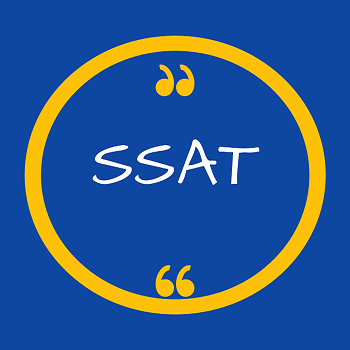The SSAT is a standardized test offered to students who are looking to apply to private schools also. The tests are provided for students in three levels therefore elementary (3rd and 4th graders), middle (5th to 7th graders), and upper (8th to 11th graders). The SSAT moreover covers math, reading, and verbal skills. The test was created to measure the ability in particular skills and is not appraised as an achievement test, and SSAT scores are not a part of your college application.
Furthermore, SSAT helps test students for admission to private middle and high schools different levels of the test are:
- Upper Level- 8th grade and above.
- Middle Level- 5th, 6th and 7th grade.
- Elementary Level- 3rd and 4th grade.
The SSAT is a standardized test that assesses a student’s skills in three core areas specifically: Quantitative, Reading Comprehension, Verbal Reasoning, and Essay (optional). Also, there is a wrong answer penalty on the SSAT.
What’s on the SSAT?
- Quantitative (Math): Composed of math computation also.
- Verbal: Vocabulary and analogy questions.
- Reading: Reading passages.
- Writing Sample: The writing sample is not scored, but schools use it to assess writing skills.
- Experimental: Mixed content questions similarly(verbal, reading, and math). Now this section does not count toward reported scores.
There are three levels to the exam:
| Current Grade | Appropriate Test Level | Test Duration |
| Grades 3-4 | SSAT Elementary-Level Test | 2 hours, 5 minutes |
| Grades 5-7 | SSAT Middle-Level Test | 3 hours, 10 minutes |
| Grades 8-11 | SSAT Upper-Level Test | 3 hours, 10 minutes |
Elementary Level SSAT Test Breakdown
| Section | # Of Question | Type of Question | Duration |
| Quantitative/Math | 30 | Basic addition, subtraction, multiplication, and division, Place value, Ordering of numbers (greater than, less than), Fractions, Basic concepts of geometry, Interpretation of graphs | 30 |
| Verbal | 30 | Vocabulary, Verbal Reasoning, Ability to Relate Ideas Logically | 20 |
| Break | – | – | 15 |
| Reading | 28 | Main Ideas, Details, Inferences, Word Meanings, Author’s Purpose, and Tone, Opinions, and Arguments, Predictions | 30 |
| Writing Sample | 1 prompt | A topic statement which you will be asked to respond to (support or argue), using specific examples from personal experience, current events, history, or literature | 15 |
| Experimental Section | 15-17 | Verbal, Reading, and Quantitative-style questions | 15 |
Middle/Upper-Level SSAT Test Breakdown
| Section | # Of Question | Type of Question | Duration |
| Writing Sample | 1 | A topic statement which you will be asked to respond to (support or argue), using specific examples from personal experience, current events, history, or literature | 25 |
| Break | – | – | 5 |
| Quantitative/Math | 30 | Number Concepts and Operations, Algebra, Geometry, Measurement, Data Analysis, Probability | 30 |
| Reading | 40 multiple choice (7 passages) | Main Ideas, Details, Inferences, Word Meanings, Author’s Purpose, and Tone, Opinions, and Arguments, Predictions | 40 |
| Break | – | – | 10 |
| Verbal | 60 multiple choice (30 synonyms and 30 analogies) | Vocabulary, Verbal Reasoning, Ability to Relate Ideas Logically | 30 |
| Quantitative (Math) | 25 | Number Concepts and Operations, Algebra, Geometry, Measurement, Data Analysis, Probability | 30 |
| Experimental Section | 16 | Verbal, Reading, and Quantitative-style questions | 15 |
If you already know about SSAT and preparing for the upcoming SSAT test, then check the Socrato YouTube channel for Practice Test scoring and diagnostic report. To Prepare smartly for the SSAT, download our free e-book “Smart and effective way SSAT prep”.










